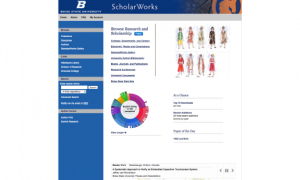 |
June 22, 2018 Volume 24, Number 25 |
Research and Education |
General Interest |
Network Tools |
Revisited |
In the News |
Research and EducationBack to Top | |
 |
|
 |
|
 |
|
 |
|
 |
|
 |
|
 |
|
 |
|
General InterestBack to Top | |
 |
|
 |
|
 |
|
 |
|
 |
|
 |
|
 |
|
Network ToolsBack to Top | |
 |
|
 |
|
RevisitedBack to Top | |
 |
|
In the NewsBack to Top | |
New Studies Challenge Popular Conceptions about Pterosaurs | |
|
No, these pterosaurs were not Jurassic puffins We Have Probably Been Imagining Pterosaurs All Wrong Study casts doubt on traditional view of pterosaur flight Pterosaurs: Flight in the Age of Dinosaurs What Doomed Pterosaurs? Hundreds of Fossilized Pterosaur Eggs Uncovered in China In the past month, two separate scientific studies have complicated some popular beliefs about pterosaurs, the Cretaceous period reptiles that include pteranodon and the pterodactylus. On June 7, Jordan Bestwick and David Unwin, both of the University of Leicester, published a paper in Biological Reviews that examined previous scholarship about what pterosaurs ate. The pair read 124 published articles on the topic and found that the vast majority of these studies (87%) relied on qualitative analysis (such as comparative anatomy) rather than quantitative analysis. According to Unwin, these results indicate that "our current ideas [about the pterosaur's diet] are poorly founded, and largely depend on qualitative assertions often made decades, or even centuries ago." Meanwhile, Armita R. Manafzadeh of Brown University and Kevin Padian of UC Berkeley published a paper in Proceedings of the Royal Society B this May that challenged popular ideas about what pterosaurs looked like. Pterosaurs are often depicted as having splayed hind limbs, not unlike modern-day bats. As Manafzadeh notes, "Most of the work that's being done right now to understand pterosaur flight relies on the assumption that their hips could get into a bat-like pose." However, paleoartists have had to rely on bone structure alone to imagine pterosaurs because ligaments--which can limit bone rotation-- do not fossilize. In her research, Manafzadeh examined the bone structure and ligaments of quails using an x-ray video. Next, she created three-dimensional animations of possible bone arrangements based on her observations of the bones and ligaments. By doing so, Manafzadeh found that ligaments likely prevented pterosaurs from looking the way that we imagine them. [MMB] The first link takes readers to a helpful summary of the recent Biological Reviews article, courtesy of Elsa Panciroli of The Guardian. The next links take readers to two summaries of the Proceedings from the Royal Society B articles. These summaries come from Cara Giaimo of Atlas Obscura and from Science Daily. The American Museum of Natural History offers a number of sources about the pterosaur, which readers can access through the fourth link. Moving along, the fifth link takes readers to a recent Smithsonian Magazine article that considers research about the pterosaur's demise. Finally, in late 2017, a team of paleontologists announced that they had uncovered over 200 fossilized pterosaur eggs in China. Readers can learn more about this discovery and its significance through the sixth link, a New York Times article by Nicholas St. Fleur. | |
